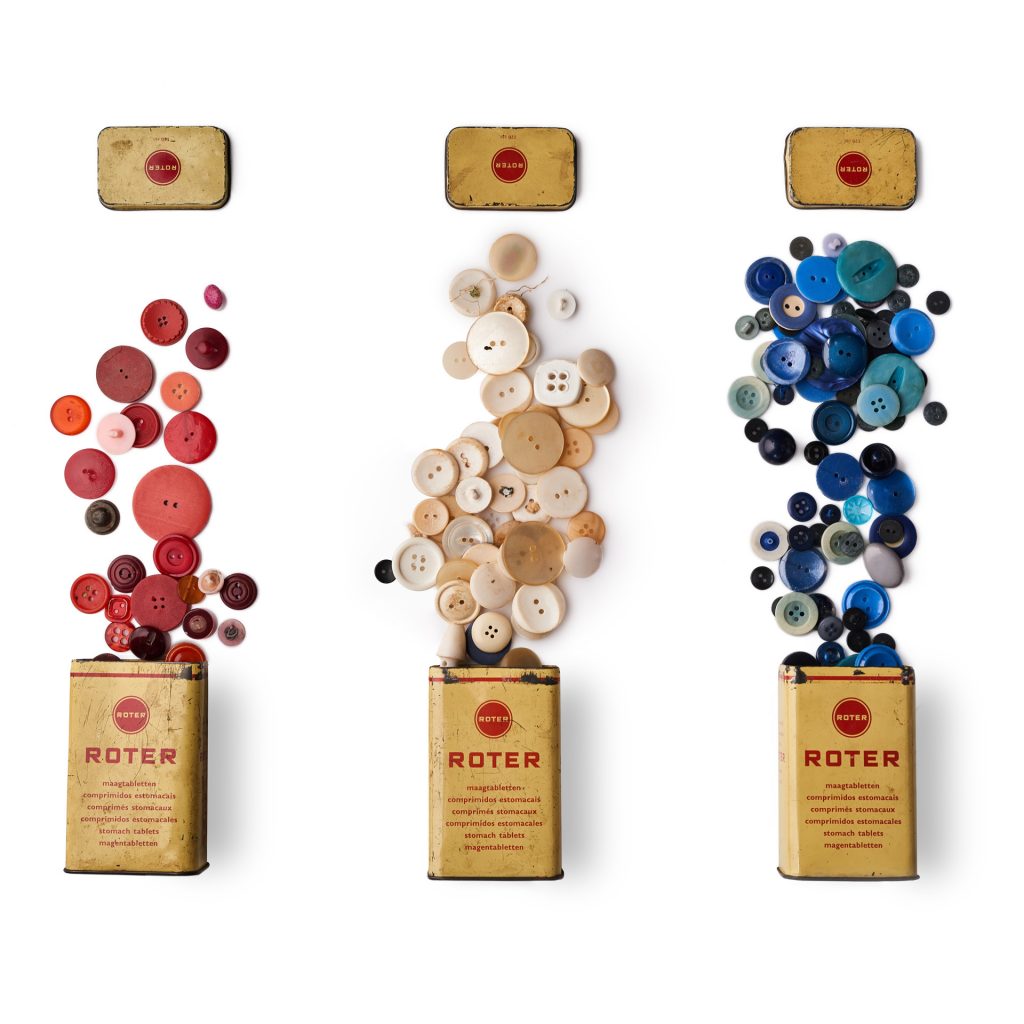Dor Guez (b. 1980)
Blue, White, Red (Bleu, Blanc, Rouge), 2014
Cans, buttons, vest
Courtesy of the Leonid and Tatiana Nevzlin Collection
Dor Guez is an artist and the founder of The Christian Palestinian Archive (CPA). His family is of Jewish Tunisian and Christian Palestinian origin. Many of his works question identity and history and explore the relationship between narrative and memory. In Bleu, Blanc, Rouge, the displayed family objects are presented as both Eastern and Western, thereby highlighting the complexities involved in immigrant identity.
Must Know
Dor Guez’s photography, video, mixed media, and essays explore the relationship between art, narrative, and memory. Interrogating personal and official accounts of the past, Guez raises questions about contemporary art’s role in narrating unwritten histories and re-contextualizing visual and written documents. Since 2006, his ongoing research focuses on archival materials of the region.
In exhibition Pendant Letters, Guez deals with the Jewish side of his family in the installation entitled Bleu Blanc Rouge. Presenting itself as an objective collection of artifacts and objects, within museum vitrines and on pedestals, the items are in fact a collection of family objects: buttons, tin cans and a vest. All the objects presented are ambivalent, in the sense that they reference both eastern and western identities, alluding to the complex identity of Jewish Tunisian immigrants to Israel in the 1950s. Indeed, the Jewish community was greatly influenced by the French protectorate in Tunisia. This is palpable in the name of the installation, but also in the other works which were presented in the show, especially with the complex use of language, both Judeo-Arabic and French. The exhibition’s starting point is therefore again Guez’s own family history, but resonates with the viewers in many different ways, no matter where they come from. Each visitor can project his or her own family history onto the work, and this is the strength of the work .
Guez’s approach in Pendant Letters acts as a tool to document, archive, restore, and transmit untold and repressed histories and identities. His mission between a meticulous historian and artist is a fine tension, one that makes his work so fascinating and universal.

